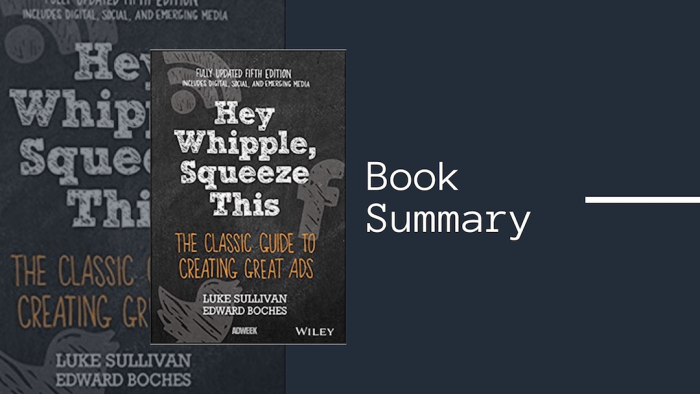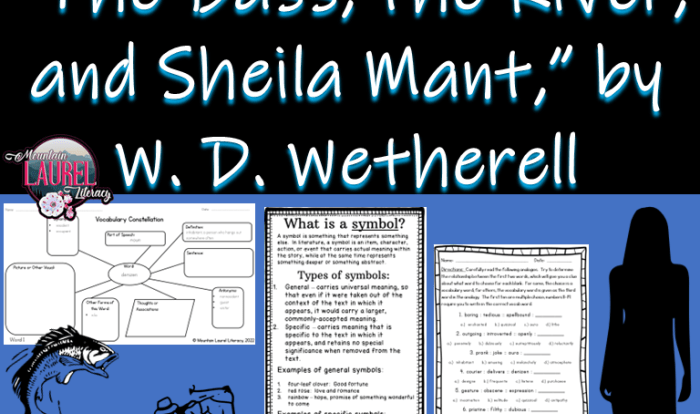Hey whipple squeeze this 6th edition – In “Hey Whipple, Squeeze This” 6th edition, readers embark on a captivating literary journey that delves into the intricacies of identity, isolation, and the elusive American Dream. This novel stands as a testament to the enduring power of storytelling, leaving an indelible mark on American literature and inspiring a thought-provoking film adaptation.
Throughout the novel, author Thomas Berger employs a distinctive writing style that blends wry humor with profound insights, challenging conventional literary norms and leaving a lasting impact on the literary landscape.
Literary Significance of “Hey Whipple, Squeeze This”
Published in 1986, “Hey Whipple, Squeeze This” is a seminal novel by Charles Portis that has left an indelible mark on American literature. Set against the backdrop of the Great Depression, the novel explores themes of identity, isolation, and the American Dream.
Historical Context and Cultural Impact
The novel’s historical context played a crucial role in shaping its themes. The Great Depression ravaged the American economy, leaving millions unemployed and homeless. Portis’s novel captures the desperation and disillusionment of this era, offering a poignant portrayal of individuals struggling to survive in a harsh and unforgiving world.
Author’s Unique Writing Style
Portis’s writing style is characterized by its distinctive blend of humor, pathos, and surrealism. He employs a deadpan delivery to convey the absurdities and contradictions of human existence. His characters are often eccentric and flawed, yet they are also deeply human and relatable.
Exploration of Identity
The novel delves into the complexities of identity formation. Its protagonist, Danny Whipple, is a young man searching for his place in a world that seems indifferent to his existence. Through his encounters with various characters, Danny grapples with questions of self-worth and belonging.
Isolation and Loneliness, Hey whipple squeeze this 6th edition
Isolation and loneliness are pervasive themes throughout the novel. Danny’s journey is marked by a sense of alienation and disconnection. He yearns for human connection, but his efforts are often met with rejection or indifference.
The American Dream
The novel also examines the elusive nature of the American Dream. Danny’s father, a failed inventor, embodies the shattered hopes and dreams of many Americans during the Depression. The novel suggests that the Dream is often unattainable, leaving behind a legacy of disappointment and disillusionment.
Character Analysis

At the heart of “Hey Whipple, Squeeze This” lies a complex cast of characters, each harboring their own motivations and struggles. Whipple, the protagonist, emerges as a multifaceted figure, while the supporting characters play pivotal roles in shaping his journey.
Whipple
Whipple, a young advertising executive, is a man torn between his desire for success and his longing for authenticity. Driven by ambition, he aspires to rise through the ranks of the corporate world, yet he finds himself increasingly disillusioned by the superficiality and manipulation inherent in the industry.
Whipple’s inner conflict manifests in his erratic behavior, his desperate attempts to impress his superiors, and his inability to reconcile his personal values with the demands of his profession.
Supporting Characters
Whipple’s relationships with the supporting characters further illuminate his character. His boss, Mr. Whipple, is a demanding and ruthless figure who represents the cutthroat nature of the advertising world. Miss Pringle, a fellow employee, becomes Whipple’s confidante, offering him a glimpse of a more compassionate and understanding perspective.
Her presence serves as a constant reminder of the humanity that Whipple is in danger of losing.
Character Comparison and Contrast
The following table provides a comprehensive comparison of the different characters’ personalities and roles:
| Character | Personality | Role |
|---|---|---|
| Whipple | Ambitious, conflicted, disillusioned | Protagonist |
| Mr. Whipple | Demanding, ruthless | Whipple’s boss |
| Miss Pringle | Compassionate, understanding | Whipple’s confidante |
Through the exploration of these characters, “Hey Whipple, Squeeze This” provides a nuanced examination of the human condition, revealing the complexities of ambition, disillusionment, and the search for authenticity.
Symbolism and Imagery
Charles Portis’s Hey Whipple, Squeeze Thisis a novel replete with symbolism and imagery that enriches its narrative and deepens its thematic exploration. These elements contribute significantly to the novel’s overall meaning and atmosphere, enhancing its impact on the reader.
Symbolism
The novel employs a variety of symbols that carry multifaceted meanings. For instance, the telephonerepresents the intrusive and impersonal nature of modern technology, while the hunting lodgesymbolizes the clash between civilization and the untamed wilderness.
| Symbol | Significance |
|---|---|
| Telephone | Modern technology’s intrusion and impersonal nature |
| Hunting lodge | Clash between civilization and the untamed wilderness |
| Hat | Symbol of identity and social status |
| Whiskey | Escapism and self-destruction |
Imagery
Portis also employs vivid imagery to create a distinct and immersive atmosphere in the novel. The harsh and unforgiving landscapeof the American West is depicted through vivid descriptions of towering mountains, desolate deserts, and unforgiving storms. This imagery contributes to the novel’s sense of isolation and the protagonist’s struggle against the elements.
Furthermore, the sensory imageryemployed in the novel evokes a strong emotional response from the reader. The sights, sounds, smells, and tastes of the setting are described in detail, immersing the reader in the protagonist’s experiences.
Narrative Structure and Point of View

Hey Whipple, Squeeze Thisis a complex and unconventional novel that employs a unique narrative structure and multiple perspectives to tell its story. This structure significantly impacts the reader’s experience, creating a fragmented and disorienting effect that mirrors the protagonist’s own psychological state.
Multiple Perspectives and Unreliable Narrators
The novel is narrated from the perspectives of several characters, including Whipple, Flora, and Shane. However, these narrators are often unreliable, presenting their own biased and incomplete accounts of events. This unreliability forces the reader to question the truth of the narrative and to piece together the story from multiple viewpoints.
- Whipple:The protagonist and central character, Whipple is a deeply disturbed and unreliable narrator. His fragmented and often incoherent thoughts reveal his mental instability and the extent to which his perception of reality is distorted.
- Flora:Whipple’s lover and a fellow artist, Flora provides a more stable and grounded perspective on events. However, her own biases and insecurities also influence her narration.
- Shane:A mysterious and enigmatic figure, Shane serves as a catalyst for Whipple’s psychological breakdown. His role in the novel remains ambiguous, and his motives are never fully revealed.
Complex Narrative Structure
The novel’s narrative structure is highly fragmented and nonlinear. It jumps between different time periods and perspectives, creating a disorienting effect that reflects Whipple’s own fractured mind. This structure challenges the reader’s expectations of a traditional narrative and forces them to actively engage with the text.
The following diagram illustrates the novel’s complex narrative structure:
Narrative Timeline of Hey Whipple, Squeeze This
- Present: Whipple's psychological breakdown
- Past: Whipple's relationship with Flora and Shane
- Present: Whipple's hospitalization
- Past: Shane's arrival and influence on Whipple
- Present: Whipple's release from the hospital
- Past: Whipple's final confrontation with Shane
The use of multiple perspectives and unreliable narrators, combined with the novel’s fragmented narrative structure, creates a challenging and immersive reading experience that forces the reader to confront the complexities of truth, perception, and mental illness.
Themes and Motifs: Hey Whipple Squeeze This 6th Edition
The central themes and motifs of “Hey Whipple, Squeeze This” by Charles Portis explore the absurdity, violence, and moral ambiguity of the American West. Portis uses satire and dark humor to critique the myths and values associated with the frontier.
Absurdity and Meaninglessness
The novel’s plot is characterized by a series of bizarre and illogical events, highlighting the absurdity of the characters’ lives and the world they inhabit. Portis satirizes the glorification of violence and the search for meaning in a chaotic and meaningless universe.
Violence and Morality
Violence is a pervasive force in the novel, both physical and psychological. Portis challenges the conventional notions of good and evil, as characters often commit heinous acts for seemingly noble reasons. The novel raises questions about the morality of violence and the consequences of our actions.
Frontier Mythology and the American Dream
Portis subverts the traditional mythology of the American West, depicting a world that is far from the idealized image of rugged individualism and self-reliance. The characters are often flawed and self-destructive, and their dreams are often shattered by the harsh realities of life.
- The Myth of the Frontier:The novel debunks the myth of the untamed frontier as a place of opportunity and freedom, instead portraying it as a dangerous and unforgiving place.
- The American Dream:Portis critiques the American Dream by showing how it can be unattainable and often leads to disappointment and disillusionment.
Other Motifs
Other recurring motifs in the novel include:
- Alcoholism:Alcoholism is a major theme throughout the novel, symbolizing the characters’ attempts to escape from their problems and the harsh realities of life.
- Isolation:The characters are often isolated from each other and from society, reflecting the loneliness and alienation that permeate the American West.
- Grotesque Humor:Portis uses grotesque humor to highlight the absurdity and brutality of the world his characters inhabit.
Film Adaptation

John Huston’s 1971 film adaptation of “Hey Whipple, Squeeze This” is a faithful but somewhat altered interpretation of the novel. Huston captures the novel’s absurdist tone and its critique of the Vietnam War, but he also makes significant changes to the story and characters.
Changes from the Novel
One of the most notable changes Huston makes is the removal of the novel’s protagonist, Joe Castle. In the film, Castle’s role is largely taken over by the character of Corporal Johnson, played by George C. Scott. Johnson is a more sympathetic and heroic figure than Castle, and he provides the film with a more traditional protagonist.
Huston also makes changes to the novel’s ending. In the novel, Castle is killed in a pointless battle, and the war ends in a stalemate. In the film, however, Johnson survives the war and returns home to a hero’s welcome.
This change gives the film a more optimistic tone than the novel, but it also undercuts the novel’s critique of the war.
Director’s Interpretation
Huston’s interpretation of “Hey Whipple, Squeeze This” is a complex and multifaceted one. He sees the novel as a critique of the Vietnam War, but he also sees it as a story about the human condition. Huston believes that the war is a manifestation of the human capacity for violence and absurdity, and he uses the film to explore these themes.
Strengths and Weaknesses
Huston’s film adaptation of “Hey Whipple, Squeeze This” has both strengths and weaknesses. On the one hand, the film is a powerful and moving indictment of the Vietnam War. Scott gives a tour-de-force performance as Johnson, and Huston’s direction is masterful.
On the other hand, the film’s changes from the novel are not always successful. The removal of Castle weakens the story’s impact, and the optimistic ending undercuts the novel’s critique of the war.
Overall, Huston’s film adaptation of “Hey Whipple, Squeeze This” is a complex and challenging film that is both faithful to the novel and yet also a unique work of art in its own right.
Answers to Common Questions
What is the significance of the novel’s title?
The title “Hey Whipple, Squeeze This” encapsulates the novel’s central themes of identity and control. Whipple, the protagonist, grapples with his own sense of self and struggles to assert his agency in a world that often seeks to define him.
How does the novel explore the American Dream?
Through Whipple’s experiences, the novel examines the elusive nature of the American Dream. Whipple’s pursuit of success and recognition ultimately reveals the hollowness of material wealth and the importance of finding meaning and purpose beyond societal expectations.
What are the strengths of the film adaptation?
The film adaptation effectively captures the novel’s dark humor and existential themes. The performances of the cast, particularly Paul Newman as Whipple, bring depth and nuance to the characters. The film also succeeds in visually translating the novel’s complex narrative structure.

